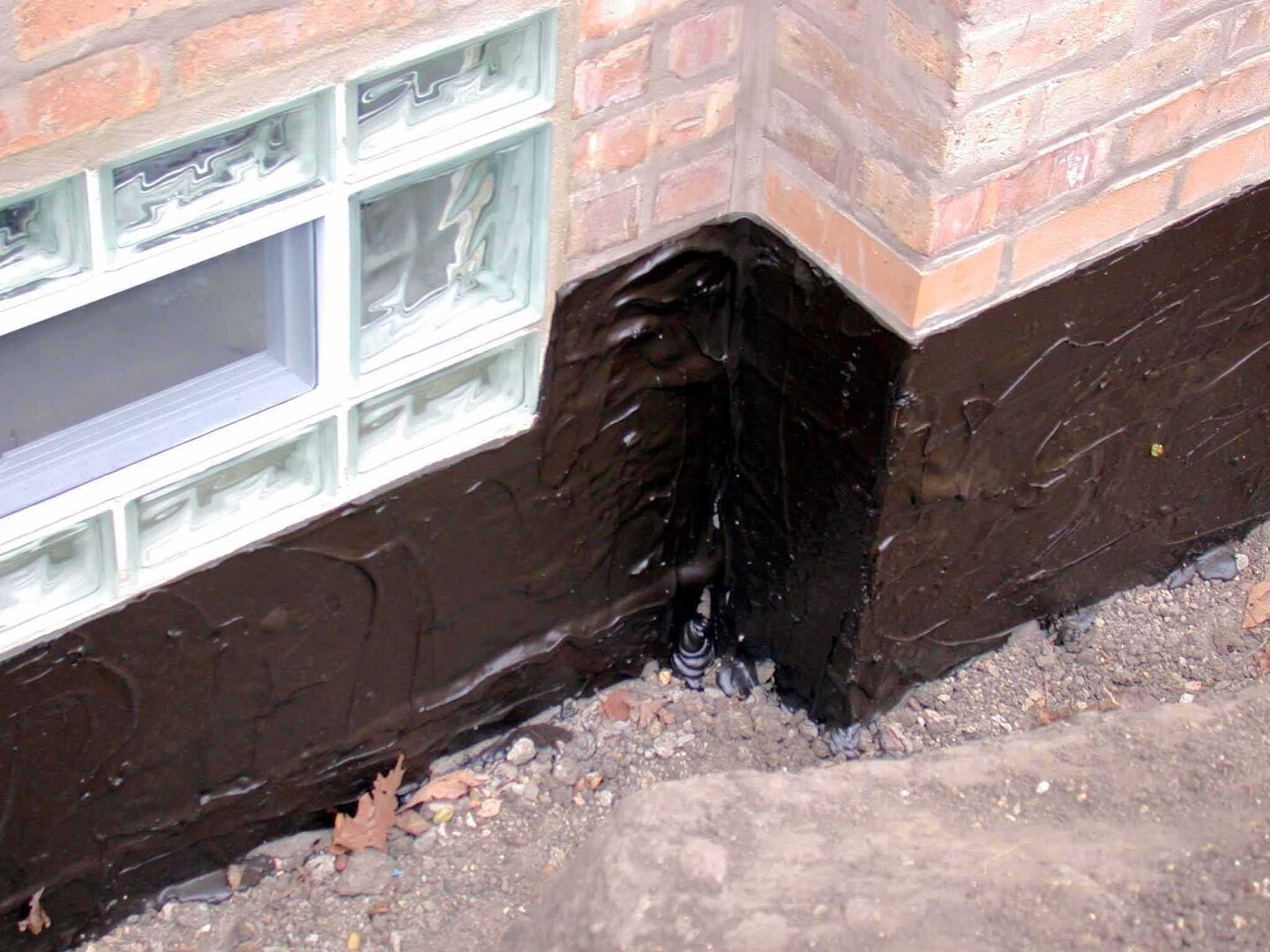Exterior Waterproofing Membrane vs. Sodium Bentonite Injection: What’s Best for Seepage?

When most homeowners think of basement seepage, they imagine water entering their basements through some visible opening such as a crack in the wall or floor, gaps around a badly fitted window or the (sort of) visible cove joint.
Wall cracks, floor cracks and cove seepage are the most common sources of water in the basement but sometimes the wall itself is the problem.
A foundation wall made of poured concrete is generally pretty impervious to water as long as it remains intact. However, if the concrete is not thoroughly mixed, the wall may end up with a spot or two of dry mixture within the wall that leaves it more porous than it should be.
With a foundation wall made of masonry, hundreds if not thousands of feet of mortar joints between masonry units can crack and deteriorate to allow seepage. Also, concrete block, the most commonly used masonry unit, is itself porous and can allow seepage through the block.
When seepage occurs through or over a foundation wall, the best way to stop it is by creating a waterproof barrier on what basement waterproofers call the “positive side,” that is, the exterior of the foundation wall. There are two very different approaches to this type of repair and it’s helpful for homeowners to understand the difference.
Exterior Waterproofing Membranes vs. Sodium Bentonite Injection
The most common approach to stopping or preventing wall seepage is to install an exterior waterproofing membrane on the foundation wall.
The membrane is a thick coating of asphalt-modified polyurethane that seals the wall against the intrusion of water and is formulated to withstand soil contact.
Installing an exterior waterproofing membrane is a fairly big job. The process begins with excavation, often by hand, sometimes by machine. The contractor must dig around the foundation, often all the way down to the footings, leaving a trench big enough for the installer to work.
The installer spreads the polyurethane with a trowel to ensure complete coverage. Insulating material and drainage board can be installed over the membrane to keep out cold, protect the membrane and channel water downward.
Quite often, exterior drain tile is installed at the same time to carry off ground water and provide thorough protection against seepage.
When the installation is finished, the excavation is backfilled.
Another approach to creating a positive-side barrier is to use a slurry of sodium bentonite clay that is pumped into the soil against the foundation.
Sodium bentonite can be an effective waterproofing material when its use is site-specific. For example, almost all basement waterproofing companies will use sodium bentonite to seal a seeping wall crack that is inaccessible from inside the basement and therefore cannot be injected with expanding polyurethane.
When sealing a crack, a small hole is dug to contain the clay and it is used in a granular form that absorbs water from the soil to create a plastic, permanent water barrier.
Some basement waterproofing contractors use sodium bentonite instead of an exterior waterproofing membrane because they are able to offer the process at a lower cost because it does not require excavation. They promote this “no digging” approach without pointing out its flaws:
Because the clay is injected into the soil, the installer has to guess where the seepage originates;
Once the slurry enters the soil, there is no control over where it goes. It may end up covering portions of the wall adequately or it may not; and,
If the home has exterior drain tile, there is a very good chance that the clay slurry will enter the piping and set up there, clogging the pipe and causing the entire system to fail.
An exterior waterproofing membrane, on the other hand, goes exactly where it is needed and covers the entire wall, not just where it happens to land. There is no chance of the polyurethane clogging drain tile.
Although the “no digging” approach may appeal to a homeowner because of its price, the only way to ensure that a foundation wall is completely sealed and impervious to water is to install an exterior waterproofing membrane.
At U.S. Waterproofing we use sodium bentonite clay where it works best – sealing cracks on the exterior. We believe that an exterior waterproofing membrane is the best solution for homeowners with wall seepage problems and many of the more than 300,000 homeowners we have helped since 1957 are enjoying dry, comfortable basements because of it. Why not ask for our free advice?




